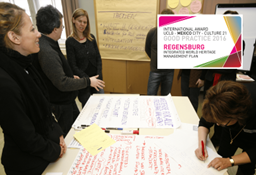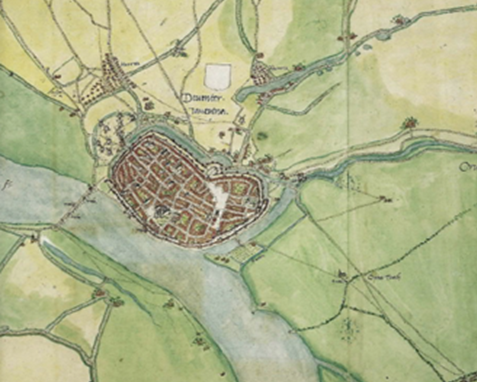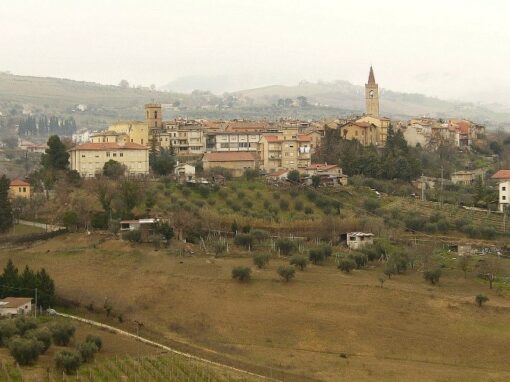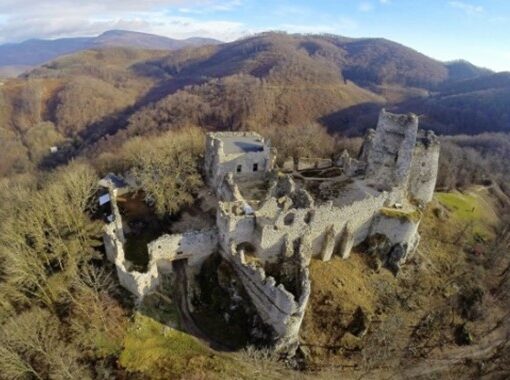Patios de la Axerquía: Regenerating historical courtyards through social innovation
Cordoba, Spain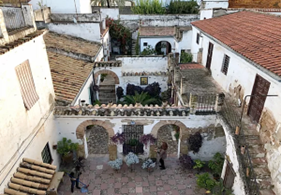
Lead
Main hazard(s)
Disaster Risk Management phase(s)
Type(s) of measure(s)
Background
With a growing tourism industry and very little industrial activity, Cordoba (a city of some ca. 300,000 inhabitants) is now transforming itself and gradually becoming gentrified. The city is rich in architectural and intangible cultural heritage, and agriculture is very relevant for the economy. The unemployment rate in Cordoba is amongst the highest in Spain (at 28.5%).
Sources
https://www.built-heritage.net/gaia-redaelli-issue9
https://www.wmf.org/project/courtyard-houses-axerqu%C3%ADa
https://elpais.com/elpais/2019/03/20/seres_urbanos/1553072516_009402.html
Interview with Gaia Redaelli, co-founder and president of PAX
Contact info
Gaia Redaelli; gaia@patiosaxerquia.eu
For more information on PAX, visit: http://patiosaxerquia.org/#red
Detailed description
The historic district of Cordoba is suffering de-population as long-term residents abandon their courtyard houses seeking a more comfortable life away from mass tourism. In April 2018, PAX (Patios de la Axerquía) Association was established by local groups to regenerate the historic centre by restoring the abandoned courtyard houses (casa-patio) of the Axerquía (neighbourhood) together with resident groups constituted in housing cooperatives. An innovative operation of governance has been applied by the group fostering a change to the conventional urban development model based on speculation to one of rehabilitation of neglected areas, avoiding tourist-focused gentrification and allowing the people of Cordoba to reclaim their city’s historic environment and its intangible heritage. PAX is a local experiment that is expected in the near future to evolve into a larger scale ‘start-up’ of urban governance facing gentrification processes.
PAX provides a new style of governance in relation to urban regeneration, incorporating social innovation in a heritage city by acquiring vacant houses and cooperatively using them; implementing multi-level co-management between the city administration and the local residents, and among the residents themselves. The project is pursuing urban regeneration of a specific vulnerable area by greening the city, recovering the architectural and intangible heritage value of the courtyard houses and forming a social and solidarity-based economy; therefore, the model bridges multiple concepts.
Main outcomes and highlights
- A good preservation and development of heritage communities helps to protect and enhance collective historical memory; this may happen by moving from speculation to a rehabilitation culture, while introducing a layer of resident empowerment.
- The initiative helped to repopulate and regenerate the city’s historical centre; it also helped to revitalise the neighbourhoods and created a sense of built environment and public spaces that work as a ‘collective courtyard’: by promoting energy efficiency in the housing stock and supporting the sustainable urban rehabilitation of public buildings as well as degraded parts of the city (e.g. industrial areas that are in disuse).
- The project has so far reinforced heritage-related micro-employment, and supported the flourishing of collective projects that include refugees and migrants.
- The Courtyard Houses of Axerquía have been included on the 2020 World Monuments Watch list to place a spotlight on local efforts to repopulate the historic district and encourage further stakeholder and government engagement.
- Recognised as part of the Faro Convention Network by the Council of Europe in 2018 for applying social heritage values in an urban context, PAX was invited to the 15th International Architecture Exhibition La Biennale in Venice in 2016 and has been declared a ‘best practice’ project by the Madrid City Council for improving the social economy in a neighbourhood (2018).
Sucess factors
- The potential to re-use the existing city through revitalising abandoned patio-houses in a central neighbourhood that is earmarked for future gentrification, has provided the impetus to generate a bottom-up strategy in terms of housing policy, heritage, urban regeneration, and social cohesion by updating the use of the courtyards through a cooperative and inclusive process.
- The unique feature of PAX compared with other housing cooperatives that have been established as an alternative to property ownership and rental agreements is that it operates in a high-value heritage environment, reinforcing the coexistence that has traditionally characterised the Mediterranean city.
- Energy monitoring has been possible using a passive air circulation system that was made possible due to the design and treatment of the vegetation of the patios.
- This innovative urban project is transferable to other Mediterranean cities (Marseille, Sicily).
Lessons learned
- The applied process requires many efforts to achieve synergies between the interests of public authorities and those of the local dwellers based on the social value of cultural heritage.
- The acknowledgement of local stakeholders and development of the social stakeholder mapping in a co-creational, cooperative form have been demanding and time consuming processes.
- A significant implementation obstacle is the time needed to change to a culture of rehabilitation at the local level scale, as the global market and speculation are operating at a much higher speed.
- The COVID-19 virus outbreak in early 2020 is bringing uncertainty to the renovations (many of which are put currently in idle mode), while social distancing and remote working put additional stress on developing and maintaining effective working and social relationships.
